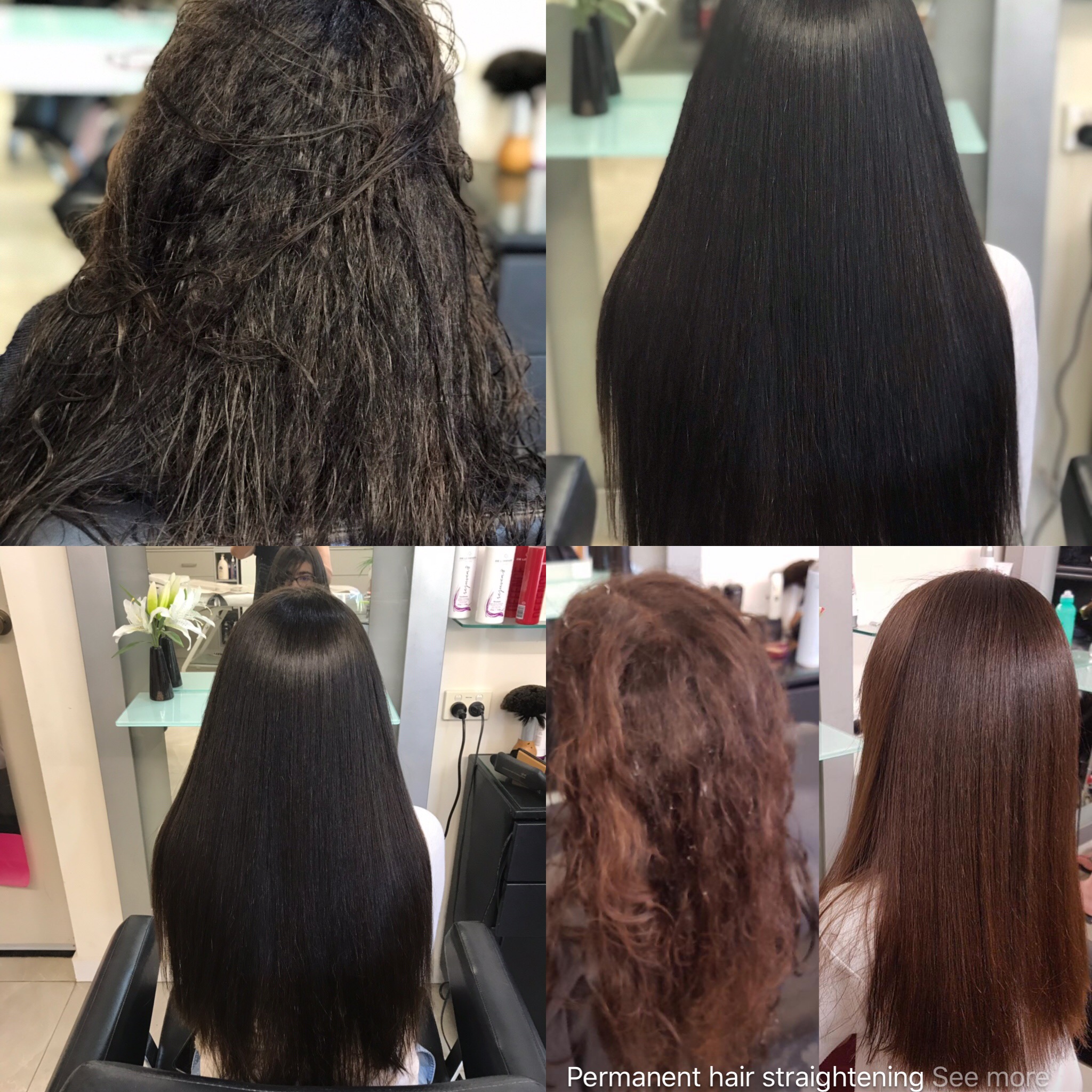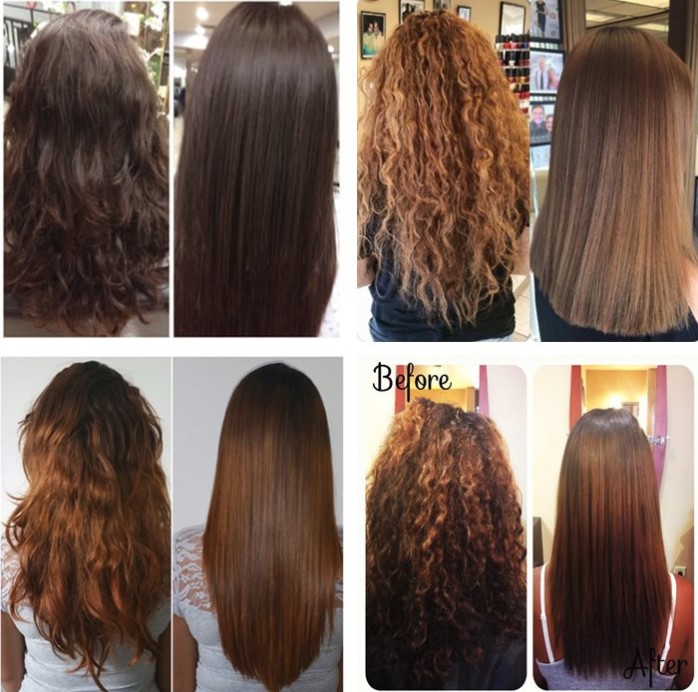Hair Products
What is eyebrows threading and how works
What is threatening and how works / Jackie’s Threading is a method of hair removal , originating in Iran In more recent times it has gained popularity in Western countries, …
7D HIFU • Non-invasive HIFU Face Lifting System
7D HIFU MMFU HIFU Anti-age equipment HIFU- (high intensity focused ultrasound ) for face Lifting The 7D HIFU energy specially designed for in-depth investigation .It’s concentrated in the depth of the …
What you need to know about Microdermabrasion: Health benefits cost
What to Expect During Your First Microdermabrasion Treatment Microdermabrasion is an immensely popular skin treatment that can be done at the salon, skin spa, or at your dermatologist’s office. If …
BRAZILIAN HAIR BOTOX and STRAIGHTENING TREATMENT OR BRAZILIAN GLASS BLOWOUT
BRAZILIAN HAIR STRAIGHTENING TREATMENT OR BRAZILIAN BLOWOUT The Brazilian Blowout is the purest form of keratin hair straightening treatment available. It has the highest success rate of any treatments. We …
HIFU Skin Tightening Treatment; Benefits, Efficiency &more and Cost
HiFU treatment For those who do not know, HIFU stands for High-Intensity Focused Ultrasound, an advanced cosmetic technology that significantly tightens and lifts several areas of the face. It also …
What you need to know about Japanese hair straightening.
 Japanese hair straightening. What is it?
Japanese hair straightening. What is it?
Japanese hair straightening, also known as thermal reconditioning, is a hair treatment that leaves your locks looking perfectly slick and wave-free to grow out , treatment uses a cysteine-based chemical solution to break the bonds and reconfigure the natural structure of the hair from the inside out.
The process dates back to the 1990s, when Japanese hair expert Yuko Yamashita patented the method. Since then, it’s become a popular method for dealing with all types of wavy, curly, frizzy, or generally unruly hair all over the world.
According to the team at Jeju Hair in London, “It’s been popular in countries such as Japan and South Korea for more than 20 years. It’s also now popular in many other countries.
Japanese hair straightening is also known as
* acid perm
* thermal straightening or thermal reconditioning
* chemical hair straightening
* yuko
* liscio
* shiseido
* cysteine hair treatment
What’s the process?
Getting any kind of permanent treatment may initially seem a little daunting, so it’s always important to fully understand the process.
With Japanese hair straightening, a chemical solution containing cysteine is used to “change the structure of the hair permanently,” Moodie explains.
The process, from start to finish
1. The cysteine solution is applied to the hair.
2. The solution is left on the hair for 20 minutes. During this time, a chemical process disables bonds in the hair.
3. The product is washed out.
4. The hair is prepped with conditioning treatments that will keep it hydrated and strong throughout the process.
5. Small sections of hair are passed through a hair straightener at 180°F (82°C) or lower for damaged hair.
6. After the hair is fully ironed straight, then it needs to be neutralized with another solution. This takes approximately 10 minutes.
7. The neutralizer is rinsed out.
8. The hair is blow-dried without the use of styling brushes.
 Aftercare
Aftercare
As with any treatment, it’s important you take good care of your hair after the treatment to ensure you get the best results and don’t damage your hair.
In the first 72 hours
In the first 3 days after getting your treatment, your hair will need some special care.
* For 3 days, keep your hair completely dry.
* Avoid showers, rain, or even sweat.
* Avoid any hair products such as oils, gels, or dry shampoo.
* Try to keep your hair as straight as possible by leaving it down and keeping it untucked from the ears.
After 72 hours
After the first 3 days, the treatment should set, and, for the most part, you’ll be able to go back to your normal hair routine.
A few exceptions include:
* Avoid chlorinated water for a few weeks.
* Avoid too much sun exposure.
* Avoid sulfur-based shampoos. If possible, use products that are designed for chemically straightened hair.
Check with your hair specialist about which hair products are best to use.
Pros and cons
Pros
* You’ll spend less time getting ready each morning.
* You won’t have to worry about your hair getting wet during the day: it will naturally air dry straight!
* Your hair may feel and look healthier in the long run, as you won’t need to use heat styling tools on your hair every day.
* You’ll still be able to style your hair using a curling iron if you choose to.
Cons
* The hair may appear thinner.
* The procedure can be fairly expensive, costing several hundred dollars.
* Even though the procedure needs to be touched up, your hair will never have the same body or shape after your first session.
* The procedure can damage your hair if you have an inexperienced stylist. Be sure to do a strand test before committing to the procedure on a full head of hair.

FAQs
Still got some questions? We’ve got you covered.
How long does it take?
The procedure will probably take around 2-3 hours. The initial consultation and strand test will also take about an hour.
How long does it last?
The procedure is permanent, but as your hair grows out, the roots will need to be touched up.
Eventually, you’ll be able to grow out all of your straightened hair. Alternatively, you can opt for a touch up around every 6 months to maintain the look.
How much does it cost?
Most salons will charge from around $400 to $800 for a single treatment.
How do you sleep on it?
In the first few days after the treatment, it’s important to keep the hair as straight as possible.
To avoid getting kinks in your hair after the procedure, keep your hair down overnight instead of tying it up.
Try to lie on your back with your hair splayed out on the pillow beneath your head.
Is it bad for your hair?
* While the mention of chemicals may sound a little frightening, Japanese hair straightening is generally safe for most people when it’s done correctly.
* In the long run, it can even improve hair health because you’ll likely use fewer heat styling products.
* Still, there are always risks when using intensive chemical treatments. For some people, straightening may present even more risks.
* For instance, if you’ve already had chemical treatments or if your hair’s been colored, you may be more likely to experience hair damage from Japanese hair straightening.
Can you use hair ties, pins, or clips?
After the initial aftercare period, which usually lasts around 3 days, you can use any kind of hair accessory.
However, for long-lasting results, try to use soft, gentle accessories that don’t cause harsh kinks in the hair.
What happens after the first wash?
Most stylists advise against washing the hair until 3 days after the treatment.
After your first wash, your hair should be straight after being blow dried or air dried.
Where to get it done?
It’s important to find a reputable, licensed salon.
In general, it’s probably smart to begin your hunt for the perfect salon in large cities. Many experienced hair stylists tend to gravitate to pricier, well-known salons in major metro areas, though this isn’t always the case.
Be sure to check reviews and testimonials and, if possible, before and after pictures. And don’t forget to do a strand test first!
Can you do it at home?
No, only trained professionals with the right tools and skills are able to perform the treatment.
Can you undo it?
Japanese hair straightening is a permanent process, so no, you can’t undo the procedure.
Once you’ve chemically straightened the hair, the structure of the hair itself is permanently changed. The only way to regain your old texture and shape is to let the hair grow out.
How do you grow it out?
Unfortunately, if you’re unhappy with the results, waiting is the name of the game.
It may take a year or 2 before your hair fully grows out. Keep getting regular trims to help your hair grow out more quickly.
Japanese hair straightening vs. relaxer
A “relaxer” is another permanent hair straightening treatment. Like a Japanese treatment, a relaxer works by changing the hair’s internal structure.
The process involves using a relaxer formula, which usually contains sodium. This treatment is usually recommended for people with extremely kinky hair, while the Japanese treatment is recommended for those with softer curls or waves.
Takeaway
Japanese hair straightening can be a great option for some people who want to manage their frizzy or curly hair.
However, the procedure involves strong chemicals, so make sure you do your research and prep for careful aftercare before diving in.
Make sure you find a reputable, experienced professional to provide the treatment, and follow after procedures closely.
Takeaway
Japanese hair straightening can be a great option for some people who want to manage their frizzy or curly hair.
Give us call on Jackie’s hair and beauty 02 8850 5008 or mobile 0432 822 268
HIFU treatment
IS HIFU SAFE FOR THE FACE? High-intensity focused ultrasound (HIFU) is considered a very safe anti-ageing treatment for the face. HIFU is a cosmetic treatment that boosts collagen production and …
HIFU treatment
IS HIFU SAFE FOR THE FACE? High-intensity focused ultrasound (HIFU) is considered a very safe anti-ageing treatment for the face. HIFU is a cosmetic treatment that boosts collagen production and …